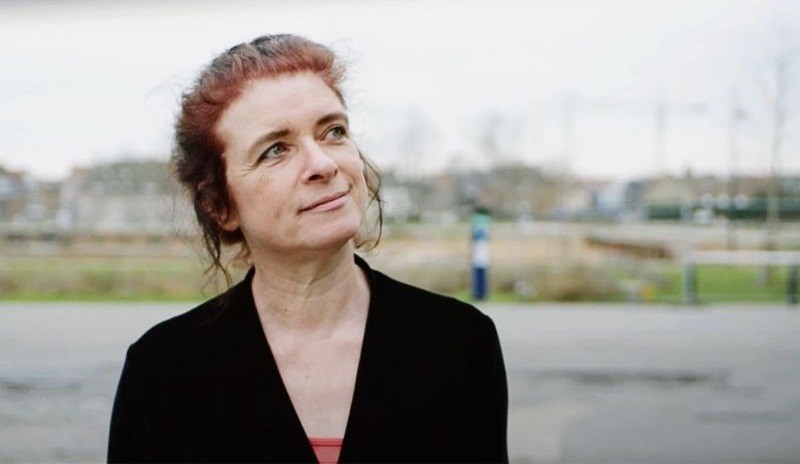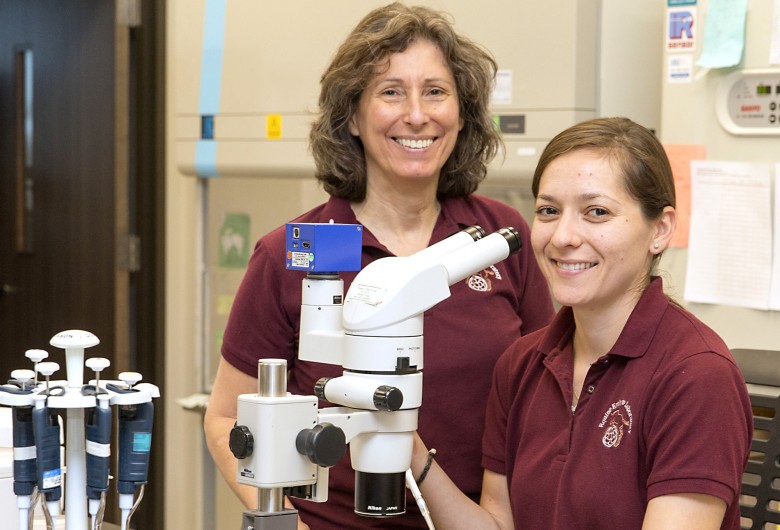
Artificial reproduction methods, such as IVF and ICSI, have already been successfully applied in humans. But this has not been the case for many domestic animals. In horses, for instance, it has seemed to be an impossible task for a long time to fertilise the eggs outside the body. Until Ann Van Soom and her team started focusing on it. “But we also have been doing research on reproduction in other animal species, including cats and dogs, rhinos and pandas.”
The egg, the sperm ... and the oviduct
“My first research was focusing on cows. There, we knew for quite some time that embryos are having more difficulties to grow in vitro than inside the womb. But we didn’t know why this was the case. The embryos simply stopped dividing as soon as they reached the eight cell stage. It was as if those embryos ‘realised’ that they were not in an [AVS2] oviduct and therefore decided to stop growing.
We then discovered that oviduct cells play a major role: when we added those cells to the medium, the embryos continued to grow. We had no idea why those oviduct cells were so important. We knew they secreted critical signalling substances, but we didn’t know which ones.
Now we know that extracellular vesicles are important for embryo quality. Those vesicles are microscopical globules that are being secreted by all cells in the body. Because these vesicles are so small, they can pass almost everywhere. They can even reach the embryo, where they release their signalling substances. By adding extracellular vesicles from high quality embryos to the medium of other embryos, we may increase the chances of a successful pregnancy.”
Test tube horses
“I started my career making test-tube calves, and later specialised in studying reproduction in small animals, but I have also supervised research on test-tube horses. In horses, the sperm cell is too weak to penetrate the egg. As a result, in vitro fertilisation (IVF) is very difficult.
When one of my PhD students wanted to focus on that problem, I was very sceptical at first. You really have to be a go-getter to want to try that. But that student succeeded together with the rest of our team. She has optimised the ICSI technique (injecting the sperm cell into the egg cell with a pipette) for application in horses, and she has since last year become a professor and is a world expert in the field of equine reproduction.
The technique is now being further commercialised. There is a lot of interest from practitioners to make test-tube horses. Thanks to the ICSI technique, we can transfer the test-tube embryo of a top jumping mare competing in the Olympics to another mare. That other recipient mare, which is not a valuable jumping horse but must have good mothering qualities is then able to carry the foal with top DNA. I always have liked being able to apply research immediately into practice.”
Predicting IVF success in humans
“By the way, our research in animals also enables us to help people. Did you know that humans are a very infertile animal species? As a young couple, you only have a 25% chance of getting pregnant, and even less so in later life.
We are now using a technique we optimised in cows to estimate how successful embryo implantation in humans will be. After all, human embryos also secrete those extracellular vesicles. We are comparing the contents of the vesicles of embryos that produce a pregnancy with those of embryos that do not grow any further after transfer. In this way, we hope to discover signalling molecules that can predict the success of a pregnancy before transfer.
Embryo implantation always gives hope, but it also often fails. Knowing in advance how (un)successful an implantation will be can make the process less mentally demanding.”
On the 19th of May 2023, the University of Wroclaw in Poland has awarded an honorary doctorate to Ann Van Soom (Faculty of Veterinary Medicine). Her merits include the birth of the first test-tube horse in northern Europe and the birth of the first foal ever in the world from a frozen immature egg.
Read also
Honorary doctorate awardee Katrin Hinrichs wants to solve the puzzle of IVF in horses
Assisted reproduction in horses is puzzling scientists. For some unknown reason, the easiest and fastest way, in vitro fertilization (IVF), does not work in horses. That there is an alternative is largely due to the pioneering work of Professor Katrin Hinrichs, who has been awarded an honorary doctorate by Ghent University.
Read also
What frogs can teach us about the origin of human hair
When in evolution did hair and nails originate? Ghent University researcher Kris Vleminckx shows that the genetic program to create human hair is at least 50 million years older than currently assumed.
Why one bird flies further than another
The darker a bird’s wing, the better it can fly. That’s the conclusion reached by Michaël Nicolaï, as a biologist and researcher at Ghent University. “Pigment seems not only to give colour, it also helps in flying for longer.”
Why the Faculty of Veterinary Medicine has remained the world’s no.1 for five years
For the fifth consecutive year, the Faculty of Veterinary Medicine at Ghent University has come first in the Shanghai ranking. This ranks faculties based on their scientific research. However, what does it mean to be number one? And why do we deserve such a good score?
Honorary doctorate awardee Katrin Hinrichs wants to solve the puzzle of IVF in horses
Assisted reproduction in horses is puzzling scientists. For some unknown reason, the easiest and fastest way, in vitro fertilization (IVF), does not work in horses. That there is an alternative is largely due to the pioneering work of Professor Katrin Hinrichs, who has been awarded an honorary doctorate by Ghent University.




